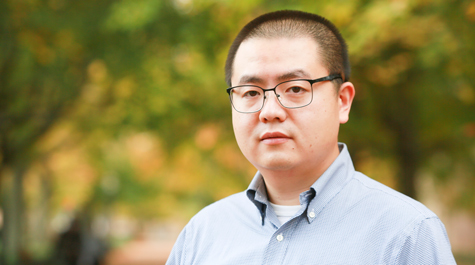Sun is teaching COVID-19 researchers how to use high-performance AMD computers
Large segments of the world’s research community refocused in early 2020 in response to the growing COVID-19 pandemic.
Biochemists, epidemiologists, molecular biologists, geneticists and other specialists began working on various ways to model, track and attack the novel coronavirus using the most sophisticated scientific techniques and methods. Those techniques have become increasingly computationally intensive in nature, requiring high-performance computing not always available to the COVID research community.
The multinational semiconductor company Advanced Micro Devices — AMD — stepped into the fight against COVID-19 by supporting 23 organizations in addressing issues such as vaccine development, genetic sequencing and modeling of the outbreak. AMD provides researchers with high-performance computing devices, especially graphics processing units, supported by the AMD Radeon Open Compute (ROCm) platform.
AMD brought in a set of instructors, including William & Mary’s Yifan Sun, to make sure the researchers get the maximum benefit of the combined 12 petaflops of computing capacity. Sun and his fellow instructors are holding a series of online lectures and office hours to get the COVID researchers up to speed on graphics processing unit (GPU) computing and, in particular, the computing language needed.
“Even before COVID, we were writing a book designed for the HIP program language, which is what you need to work with AMD GPUs,” said Sun, an assistant professor in William & Mary’s Department of Computer Science. “The book is not done yet, but almost there. So, the AMD people put together experts in component computing with experts in research for a 10-week session.”
Sun said he has 33 people taking his classes. It’s an international group, with representatives from research institutions in the U.S., Italy, Germany, the U.K., India, France and Canada.
“They’re assistant professors, researchers, Ph.D. students,” he added. “Five of them are from AMD; I think they’re want to take the course to get a better understanding about how to program AMD GPUs and how to improve GPU program performance.”
The researchers are not novices to high performance computing, so Sun says he and the other instructors were able to hit the ground running, introducing the HIP language in the early weeks.
“Then, later on, we dive into performance tuning, invoking libraries and other tools,” he explained. “This is a hyper-focused community. They care about performance. They care about how fast they can get a result.”
The researchers develop their algorithms themselves. Sun said many of the attendees are interested in applying high-performance computing to tasks such as protein folding modeling, as well as gene sequencing and alignment. GPU-based computing shines in such computation-heavy chores, he added.
Sun explained that traditional computer architecture is based on the CPU — the central processing unit. A CPU can have numerous cores, or “brains,” and CPU cores can number into the tens, or hundreds. To link all of those cores, CPU servers communicate from rack-to-rack of servers.
“So the communications between CPU cores are intrinsically very slow,” Sun explained. “But in this initiative, we’re using GPU devices. GPUs are highly parallel, and there are thousands of cores in a single GPU.”
The GPU architecture is much faster, he said, because of the parallel nature and assembly of more cores on a single device. No need for slow fabrics such as an Ethernet cable to communicate computer to computer. Sun said the result is much quicker computation for researchers working to combat the virus causing a global pandemic.
“For common algorithms, GPUs can be hundreds to thousand times faster than CPUs. For more specific algorithms, like gene alignment, I would say at least tens of times faster,” Sun said. “You could think about it reducing a computation assignment from 10 days to one day. That’s a lot of speed-up.”
 Skip to main content
Skip to main content

